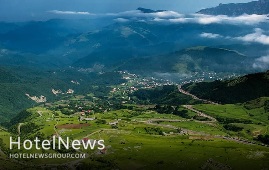
Countries are defined geographically and politically by their borders. Borders are fundamentally linked to tourism, as travel almost always entails crossing a political or another boundary, and borderlands are often the first or last areas of a country visited by travelers. Iran has a total of 5,894 kilometers of land borders with its neighbors Afghanistan, Armenia, Azerbaijan, Iraq, Pakistan, Turkey, and Turkmenistan. It also borders the Caspian Sea, Persian Gulf, and the Gulf of Oman. Several border cities dot Iran, owing to the vast size of the country’s land borders. The border cities of Iran, however, have limited tourist numbers due to their long distances from the country’s center, as well as the fact that they have not been properly promoted for foreign visitors. Here are some of the most beautiful border cities that have always gone unnoticed. Astara Astara, an Iranian border city and port, offers a wide range of tourist attractions. It is a major tourist and economic center on the west coast of the Caspian Sea, in the Gilan province. It is the last point of the border between Iran and Azerbaijan. Hakim Nezami School and Shindan Castle are two of the city’s historical sites. Astara Lagoon, Astarachay river, Qarasu river, Chelvand river, Darband river, Lavandvil river, and Espinas mountain are some of the city’s natural attractions. Among Iran’s border regions, Astara is the only area that has not experienced any tensions in the last 80 years, making it one of the safest. There is a great deal of tourism in this region because of the natural beauty and the weather. Jolfa Located in northwestern East Azarbaijan province, Jolfa borders the countries of Armenia and the Republic of Azerbaijan to the north. Jolfa has a semi-desert climate with warm summers and partly cold, moderate winters. The special importance of Jolfa is due to its historical monuments, strategic location, and appropriate geographical features, as well as its proximity to the commercial and industrial free zone of Aras (one of Iran’s most important commercial centers). Seyyed Abolqasem Nabati tomb, Duzal tower, Saint Stepanos Monastery, Nane Maryam church, ruined mill, Ushtibin village, St. Mary church, Baba Yaqub shrine, Ali Beyg fort, Jolfa historical bath and etc., are the most significant monuments and tourist attractions in this area. The region’s economy is fueled by the abundance of water resources, grasslands, and forest reserves, as well as its high potential for growth and industrialization. Minerals, agriculture, livestock, services, and scientific and training development also play an important role. There are a lot of cotton fields in this city, and weaving is the major activity of the locals. Jolfa people are Azeri and they speak in Turki Azerbaijani in their own local dialect. Maku Maku is located northwestern province of West Azarbaijan and enjoys a unique geographical and natural location. In a valley passes through which the Zangmar River divides Maku into two parts, the city is located 1294 meters above sea level. The city is surrounded by the Qarasu River and Turkey from the north, the Aras River (the Nakhchivan Autonomous Republic and Armenia) from the east, Khoy from the south, and Turkey from the west. Due to the surrounding stony mountains, this city has a moderate climate in winter and a hotter climate in summer. Mountainous landscapes, flourishing pastures, hot water springs, waterfalls, protected areas, and hunting grounds are some of the tourist attractions of this area. Maku is located on the main Tabriz-Bazargan road and has an excellent strategic location. Among the city’s most significant features is its role as the country’s only land border business and a link to Europe. As part of Maku’s economy, there is an industrial complex on the Maku-Bazargan road. Maku people rely on cross-border trade, agriculture, and animal husbandry for their livelihood. Zahedan The city of Zahedan is located in eastern Iran close to the Pakistani border. There are high lands around Zahedan, so it looks like a pit. The city is home to the mountains of Oshtoran Koh, Anjir Dan, Jico, Pir Khan, and Mulk-e Siah. Climates in this area are characterized by intense heat, aridity, and warmth. Zahedan consists of 4 parts: "Markazi", "Mir Jave", "Nosrat Abad", and "Korin", three cities, and eight rural districts. It is an academic, cultural, historical, and religious city that has a service structure. Zahedan enjoys a privileged geographic and border location which makes it an ideal place for trade with India thanks to its convenient location on the Afghanistan-Pakistan route. Pakistan’s railway enters Iran from the Mirjaveh border and Iran’s railway ends in this city. By being located among the Khorasan, Kerman, and Chabahar land routes, Zahedan is one of the Iran transit routes. Zahedan’s economy depends on agriculture in addition to trade. There are subterranean, spring, and river wells that supply the water this city needs. This area is full of color in its literature, clothing, and music. Zahedan’s cultural diversity results from migration. A good example of Baluch handicrafts is the klim bafi, needlework, seke dozi, and pottery. Zahedan architecture is influenced by Iran's ancient architecture due to its tropical weather. Baneh One of the border cities between Iran and Iraq, Baneh is located in the western province of Kordestan. The city is located 20 kilometers from the Iranian-Iraqi border, 60 kilometers southwest of Saqez and 70 kilometers southeast of Sardasht. The city is known for its large and natural oak forests. In 1984, Iraqi planes bombed Baneh and some nearby settlements during the Iran-Iraq war (1980-1988). Dul Arzan village, Shevi cave, Baneh Dam, Sorin complex are among the city’s tourist attractions, however, most of its reputation comes from its border malls and its status as a trade center. Local people speak Kurdish with Slemani accent.
Create: Jul 17, 2021 Edit: Jul 17, 2021 Regional News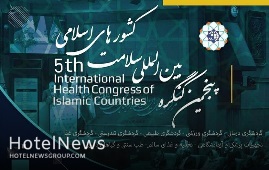
The 5th edition of the International Health Congress of Islamic Countries started in Tehran on Tuesday, aiming to find new opportunities for cooperation and development of health tourism among Muslim nations. Being held at IRIB International Conference Center, the congress is organized by the Health Tourism Development Center of Islamic Countries (HTDC) and supported by ministries, federations, institutions, and organizations in health tourism as well as private and governmental health service providers, the official website of the event announced. The three-day event has brought together seniors and experts from governmental and private sectors in the health tourism industry. The congress is being held in five specialized panel discussions of medical tourism, sports tourism, natural, wellness, and food tourism, medical and laboratory equipment, and nutrition and healthy food. The event started its official operations in 2015 with the aim of playing an effective role in developing economic relations and facilitating the networks between stakeholders in the health and health tourism industry. The developing health tourism industry is one of the most important fields of Iran’s travel sector, which is trying to prove its capabilities and capacities in attracting medical and health tourists to the country. Many domestic experts believe that medical tourism in Iran is a win-win opportunity both for the country and foreign patients, as they are offered affordable yet quality treatment services and the country gains considerable foreign currency. Iran’s two most popular medical tourist cities are Tehran and Mashhad, but the coronavirus outbreak has significantly reduced the number of travelers. Iran is one of the major destinations for health tourism in the region, and patients with 55 different nationalities, mostly from neighboring countries including Iraq, Kuwait, Bahrain, Qatar, Saudi Arabia, Oman, Pakistan, Afghanistan, Tajikistan, and Turkmenistan are seeking to use Iran’s services and facilities in this field. Iranian hospitals admitted nearly 70,000 foreign patients over the Iranian calendar year 1397 (March 2018 – March 2019) and it made an economic contribution of around $1.2 billion to the country, according to the medical tourism department at the Ministry of Health. In April 2018, the rotating presidency of the International Health Tourism Conference of Economic Cooperation Organization (ECO) was handed to the Islamic Republic for a three-year term. Mohammad Jahangiri who presides over a national center for developing health tourism said in May 2018 that Iran can annually earn $7 billion in medical and health tourism, though the sector now brings in only one-seventh or even lesser of the sum. The Islamic Republic has set its goals to exceed its yearly medical travelers to around 2 million in the Iranian calendar year 1404.
Create: Jul 17, 2021 Edit: Jul 17, 2021 Regional News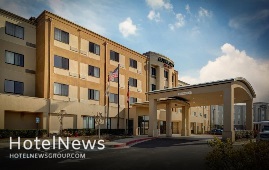
Alpental Capital (“Alpental”), a Denver-based hotel investment group, announced the acquisition of the Courtyard Atlanta Airport West and has selected Providence Hospitality Partners to manage the hotel. The 128-room hotel is located in East Pointe, Georgia, three miles from Hartsfield-Jackson International Airport and just a 10-minute drive from downtown Atlanta. The hotel recently completed an extensive $1.6m guestrooms renovation in 2018-2019, and Alpental has continued capital improvements planned for the property to further enhance the guest experience. In addition to the recently renovated guestrooms, the four-story hotel features an airport shuttle, outdoor pool, Bistro & Bar, 24-hour fitness center, 24-hour business center, and complimentary WiFi and parking. The property also provides over 3,000 square feet of meeting space that can accommodate up to 130 people, along with an executive boardroom. “We are proud to add the Courtyard to our growing hotel portfolio. The acquisition is well aligned with our strategy of acquiring high-quality hotels in submarkets with dynamic demand drivers,” said Greg Wilson of Alpental Capital. “The hotel’s new management team has done an excellent job reopening all amenities at the hotel that were temporarily closed during COVID and ensuring top quality service to our guests.” Located just off I-285 and Camp Creek Parkway, the Courtyard Atlanta Airport West is across the street from more than 1.2 million square feet of premium retail space at the Camp Creek Marketplace. The hotel is also located at the entrance of Camp Creek Business Center, an industrial development with 4 million square feet of developed space. Nearby is Atlanta’s downtown area, the Georgia International Convention Center, Turner Field, and the Georgia Aquarium, among other attractions. Guests have convenient access to and from the nearby Hartsfield-Jackson International Airport via the hotel’s complimentary airport shuttle. The Hartsfield-Jackson International Airport has historically been the busiest airport in the world and even through the pandemic, the airport has remained the busiest in the US.
Create: Jul 7, 2021 Edit: Jul 7, 2021 International News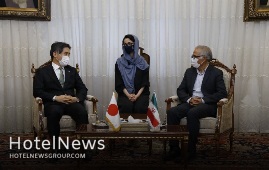
Japan’s Ambassador to Tehran Kazutoshi Aikawa whose country closely cooperates with Iran on Urmia Lake expressed content on Tuesday to see the lake being restored. In a meeting with Deputy Governor-General of East Azarbaijan Province, Aikawa said that he had travelled to the province in coordination with the United Nations Development Programme (UNDP) to see the process of implementing Urmia Lake restoration programs. Referring to the cooperation of Japan International Cooperation Agency (JICA) with the restoration program, the ambassador said that good efforts have been done and he was pleased to see the lake is being restored. He said that East Azarbaijan Province has good capacities of tourism and Japan is very interested in expanding tourism ties with the northeastern Iranian province. UNDP representative in Iran Claudio Providas said that the UN agency has had many cooperation programs with Japan to revive Urmia Lake and all programs are in progress in the best possible way. He stated that Iran was affected by climate change and this cannot be changed, but there can be programs to elevate local people’s awareness of the situation. He also said that the UNDP has implemented several programs in local communities around Urmia Lake and then it would be going to digitalize the marketing process for local agricultural products. East Azarbaijan Province Deputy Governor-General Javad Rahmati said that the province is one of the greatest provinces of Iran with over 4 million people living in the province. He also underlined that the province has close economic ties with neighboring countries Azerbaijan Republic, Armenia and Turkey. Alternative livelihood and changing agricultural pattern in the lands around Urmia Lake was among plans the current administration implemented, Rahmati said.
Create: Jul 7, 2021 Edit: Jul 7, 2021 Regional News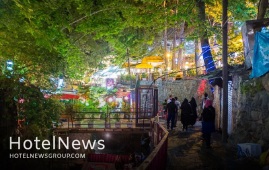
Summer has arrived in the northern hemisphere. It is great news for the sun-lovers flocking to beach resorts. But what about those who want to beat the heat? If cool weather and even cooler destinations are more to your taste, here are places around the Iranian capital where scorching heat will be nothing more than an afterthought! On the northeast side of Tehran, you can find plenty of cool townships and villages such as Fasham, Ahar, Meygoun, Oushan, Damavand, Cheshmeh A’la, and Garmabdareh to name a few. These destinations, in addition to the fresh air, fruit gardens, and lush gardens, are mostly equipped with proper recreational facilities and abundant local restaurants. On the east, Shahandasht waterfall may be the top of your agenda. The 50-meter cascade is situated off the Haraz road, which connects Tehran to the Caspian Sea in the north. Adjacent to the falls stands a Sassanid-era (224 CE to 651) stronghold, named Qaleh Malek-Bahman, which worth paying a visit. Tangeh Vashi, a popular mountainous resort that is known for having a pleasant, cool stream can be your other choice in the east direction. Tangeh Vashi is where many opt for walking for minutes to cool off. Situated some 15 kilometers west of Firouzkouh, Tangeh Vashi also bears a 19th-century bas-relief commissioned by Fath Ali Shah Qajar (r. 1797 – 1834) to commemorate hit hunts during summer excursions. Apart from the east, you can choose to stay in Kan and Sulaqan, which are riverside rural districts westward. Another cool spot may be colorful valleys across the popular Chalous road that embraces hectic rows of restaurants and coffee shops. The villages of Darband and Darakeh stand out when it comes to the north of Tehran. Those are amongst the most accessible cool destinations for relaxing and enjoying good Iranian cuisine, good weather even climbing easy mountain routes. Tajrish Square is a gateway to the rocky Darband where people hike upward trails. A few kilometers uphill from the atmospheric square the road ends, becoming a path winding up a narrow rocky valley, with water cascading down the slopes. The trail heads up into the hills past a picturesque succession of teahouses, restaurants, and fruit-conserve stalls. A visit to Darband can easily be combined with Sadabad Cultural-Historical Complex. You may exit the once royal complex via the top entrance and keep going up the hill and perhaps drink a cup of tea and puff on a qalyan (hobble-bobble) while submerged with a mountain-village feel. Also, Darakeh is where you can enjoy the lovely nature, listen to the sound of the river, and rest for a while. It is teeming with beautiful scenery, a good trekking path, and countless riverside restaurants and cafes. For people who want to do more, it is possible to hike towards the Tochal cable car and beyond. The bustling Iranian capital, however, never disappoints its travelers! Exploring this mesmerizing metropolis will transport you on a journey through more than 250 years of Iranian history – from the dazzling Golestan Palace and the adjacent Grand Bazaar to the majestic Borj-e Azadi (“Azadi Tower”) and the former U.S. embassy in downtown Tehran. The Iranian capital is also home to prestigious museums such as Treasury of National Jewels, Niavaran Palace Complex, National Museum of Iran, Glass & Ceramic Museum, Masoudieh Palace, Sarkis Cathedral, Tehran Museum of Contemporary Art, Carpet Museum of Iran, to mention but a few. Serene gardens, contemporary cafes, and traditional teahouses are other options where you can relax and enjoy all that is good about Tehran.
Create: Jul 1, 2021 Edit: Jul 1, 2021 Regional News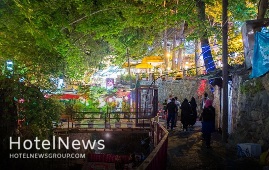
Summer has arrived in the northern hemisphere. It is great news for the sun-lovers flocking to beach resorts. But what about those who want to beat the heat? If cool weather and even cooler destinations are more to your taste, here are places around the Iranian capital where scorching heat will be nothing more than an afterthought! On the northeast side of Tehran, you can find plenty of cool townships and villages such as Fasham, Ahar, Meygoun, Oushan, Damavand, Cheshmeh A’la, and Garmabdareh to name a few. These destinations, in addition to the fresh air, fruit gardens, and lush gardens, are mostly equipped with proper recreational facilities and abundant local restaurants. On the east, Shahandasht waterfall may be the top of your agenda. The 50-meter cascade is situated off the Haraz road, which connects Tehran to the Caspian Sea in the north. Adjacent to the falls stands a Sassanid-era (224 CE to 651) stronghold, named Qaleh Malek-Bahman, which worth paying a visit. Tangeh Vashi, a popular mountainous resort that is known for having a pleasant, cool stream can be your other choice in the east direction. Tangeh Vashi is where many opt for walking for minutes to cool off. Situated some 15 kilometers west of Firouzkouh, Tangeh Vashi also bears a 19th-century bas-relief commissioned by Fath Ali Shah Qajar (r. 1797 – 1834) to commemorate hit hunts during summer excursions. Apart from the east, you can choose to stay in Kan and Sulaqan, which are riverside rural districts westward. Another cool spot may be colorful valleys across the popular Chalous road that embraces hectic rows of restaurants and coffee shops. The villages of Darband and Darakeh stand out when it comes to the north of Tehran. Those are amongst the most accessible cool destinations for relaxing and enjoying good Iranian cuisine, good weather even climbing easy mountain routes. Tajrish Square is a gateway to the rocky Darband where people hike upward trails. A few kilometers uphill from the atmospheric square the road ends, becoming a path winding up a narrow rocky valley, with water cascading down the slopes. The trail heads up into the hills past a picturesque succession of teahouses, restaurants, and fruit-conserve stalls. A visit to Darband can easily be combined with Sadabad Cultural-Historical Complex. You may exit the once royal complex via the top entrance and keep going up the hill and perhaps drink a cup of tea and puff on a qalyan (hobble-bobble) while submerged with a mountain-village feel. Also, Darakeh is where you can enjoy the lovely nature, listen to the sound of the river, and rest for a while. It is teeming with beautiful scenery, a good trekking path, and countless riverside restaurants and cafes. For people who want to do more, it is possible to hike towards the Tochal cable car and beyond. The bustling Iranian capital, however, never disappoints its travelers! Exploring this mesmerizing metropolis will transport you on a journey through more than 250 years of Iranian history – from the dazzling Golestan Palace and the adjacent Grand Bazaar to the majestic Borj-e Azadi (“Azadi Tower”) and the former U.S. embassy in downtown Tehran. The Iranian capital is also home to prestigious museums such as Treasury of National Jewels, Niavaran Palace Complex, National Museum of Iran, Glass & Ceramic Museum, Masoudieh Palace, Sarkis Cathedral, Tehran Museum of Contemporary Art, Carpet Museum of Iran, to mention but a few. Serene gardens, contemporary cafes, and traditional teahouses are other options where you can relax and enjoy all that is good about Tehran.
Create: Jun 28, 2021 Edit: Jun 28, 2021 Regional News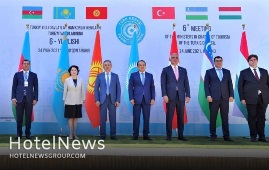
The 6th Meeting of the Ministers in Charge of Tourism of the Turkic Council convened on 24 June 2021 in Kokand,Uzbekistan. The meeting was hosted by the Deputy Prime Minister – Minister of Tourism and Sports of the Republic of Uzbekistan H.E. Mr. Aziz Abdukhakimov, moderated by the Secretary General of the Turkic Council H.E. Baghdad Amreyev and attended by the Chairman of the State Tourism Agency of the Republic of Azerbaijan, H.E. Fuad Nagiyev; Minister of Culture and Sports of the Republic of Kazakhstan H.E. Aktoty Raimkulova; Minister of Culture and Tourism of the Republic of Turkey H.E. Mehmet Nuri Ersoy; Deputy Chairman of the Cabinet of Ministers, Deputy Minister of Economy and Finance of Kyrgyz Republic H.E.Seyit Rysaliev and Ambassador of Hungary to Uzbekistan H.E.Peter Szanto. Secretary General Baghdad Amreyev briefed the Parties regarding the current state of tourism and developments, as well as the socio-economic implications and reflections of the Covid-19 pandemic in the regional and global level. Informing the Parties on the tourism relations among the Member States, as well as undertakings and activities of the Secretariat, Secretary General expressed that the close collaboration and coordination among the Turkic countries are of utmost importance to mitigate the negative effects of the pandemic, as well as attract more tourists to the region in the post-pandemic period. Secretary General of the Turkic Council communicated the new programs and projects namely “Turkic World Tourism Capital”, “Tabarruk Ziyorat” and “Tourism Map of the Turkic World” and underlined the importance of increasing the number of flights between the major cities of the Member and Observer States. The Secretary General also noted that vocational training programs provided in the field of tourism under the umbrella of the Turkic Council created a unique opportunity for the tourism employees in developing their skills, until now more than 1000 employees benefited from these trainings, the Secretariat will further coordinate the efforts for the continuation of the training and capacity building programs. As the outcomes of the Ministerial Meeting, the Ministers agreed to launch “Turkic World Tourism Capital” project in order to promote tourism in the region, in which one of the cities from the Member States will be designated as “Turkic World Tourism Capital” annually. At the end of the Meeting, city of Kokand announced as the first “Turkic World Tourism Capital” until the next Ministerial Meeting on Tourism of the Turkic Council. In this regard, international conferences and various events will be held in Kokand with participation of public sector, civil society, private sector, academia and other relevant actors from the Member States to promote tourism in the city, as well as promote the city in the Member States and the region. Ministers in Charge of Tourism exchanged experience, information and the precautions taken by the Member States for the safe travel of the tourists during the pandemic; discussed the current tourism relations among the Member States and ways to carry forward the cooperation in the sphere of tourism, as well as prospective plans in the post-pandemic period. Ministers agreed to work on the details of the “TabarrukZiyorat” project and expressed their readiness to involve the holy places of the respective countries to the project. Parties agreed to prepare the “Tourism Map of the Turkic World” to list the main historical, cultural and touristic destinations in the Turkic World, which will be the reference project in determining the main touristic destinations in the Member States. Following the Ministerial Meeting, Secretary General held bilateral meetings with the Ministers in Charge of Tourism of the Turkic Council Member States. During the bilateral meetings, Secretary General and Ministers discussed the cooperation opportunities, as well as the future plans and projects in the field of tourism to realize in the bilateral and multilateral level.
Create: Jun 28, 2021 Edit: Jun 28, 2021 International News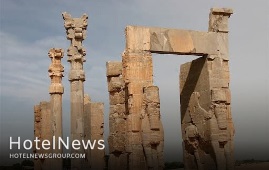
The bronze trumpets that once signaled the arrival of important foreign delegations to Persepolis, the ceremonial capital of the mighty Achaemenid Empire, may now be silent, but it is still possible to capture the sense of awe while visiting the colossal Gate of Xerxes. Built during the reign of Achaemenid king Xerxes I (r. 486 – 465 BC), who called this his Gate of All Nations, the pillared entrance is guarded by bearded and hoofed mythical figures in the style of Assyrian gate-guards. On arrival at Persepolis one is confronted by an imposing wall, completely smooth and plain, about 15 meters tall: this is the artificial terrace on which the palaces were built. This vast terrace of Persepolis, some 450 meters long and 300 meters wide, was originally fortified on three sides by a tall wall. The only access was from the monumental staircase, which leads to the Gate of All Nations. The gateway bears a cuneiform inscription in Old Persian, Neo-Babylonian, and Elamite languages declaring, among other things, that Xerxes is responsible for the construction of this and many beautiful wonders in Persia. Centuries of graffitists have also left their mark, including explorer Henry Morton Stanley. A pair of colossal bulls guarded the western entrance; two man-bulls stood at the eastern doorway. Engraved above each of the four colossi is a trilingual inscription attesting to Xerxes having built and completed the gate. The doorway on the south, opening toward the Apadana, is the widest of the three. According to sources, pivoting devices found on the inner corners of all the doors indicate that they must have had two-leaved doors, which were probably made of wood and covered with sheets of ornamented metal. Persepolis, also known as Takht-e Jamshid, whose magnificent ruins rest at the foot of Kuh-e Rahmat ("Mountain of Mercy"), was the ceremonial capital of the Achaemenid Empire. It is situated 60 kilometers northeast of the city of Shiraz in Fars Province. Persepolis was the seat of the government of the Achaemenid Empire, though it was designed primarily to be a showplace and spectacular center for the receptions and festivals of the kings and their empire. The royal city ranks among the archaeological sites which have no equivalent, considering its unique architecture, urban planning, construction technology, and art. The city was burnt by Alexander the Great in 330 BC apparently as revenge to the Persians because it seems the Persian King Xerxes had burnt the Greek City of Athens around 150 years earlier The immense terrace of Persepolis was begun about 518 BC by Darius the Great, the Achaemenid Empire’s king. On this terrace, successive kings erected a series of architecturally stunning palatial buildings, among them the massive Apadana palace and the Throne Hall (“Hundred-Column Hall”). This 13-ha ensemble of majestic approaches, monumental stairways, throne rooms (Apadana), reception rooms, and dependencies is classified among the world’s greatest archaeological sites.
Create: Jun 21, 2021 Edit: Jun 21, 2021 Regional News
Hospitality, at its core, is an industry of people taking care of people, and has a long-standing commitment to cleanliness and service standards. While the housekeeping team is central in the delivery of those standards, it operates in the background, out of view. Room attendants and supervisors moved around discreetly to be as invisible as possible. However, COVID-19 has thrust housekeeping into the limelight. As COVID has led to a surge in public health awareness, hotels are now put in a position of making their commitment to cleanliness part of their guest experience. Rethinking operations, and re-designing housekeeping operations using technology is the only way to achieve the productivity and quality that is required. At Knowcross, we focus on three central housekeeping areas: staff productivity, cleaning quality, and guest experience. We have moved swiftly to enhance our products to adapt to the negative impact COVID-19 has had on each of these areas. The unpredictability of the virus means that your hotel must be vigilant in its adherence to new health and safety protocols. Your housekeeping technology has a critical role here and it serves several purposes. First, it underlines that health and safety should always be top of mind every day and that your hotel fosters a culture of accountability. Secondly, health checks and associated reporting help support contact tracing in the event there is a positive test amongst the team. Quicker containment means that the hotel itself can be protected from shutdown and, most importantly, your staff stays safe. Lastly, health checks communicate to your staff that you are looking out for one another. New Cleaning Protocols Hospitality industry was quick to roll out an extensive list of cleaning and safety protocols after COVID-19 erupted. Housekeeping operations must support changes such as the elimination of high-touch items in guest rooms, dedicated ‘cleanliness’ teams and the intensive sanitisation of common areas and guest rooms. All of these changes impact staffing assignments and cleaning times, which have a direct impact on guest experience. The truth is that most hotels, unfortunately, have had to let staff go, resulting in more work for the remaining people. Your housekeeping software must include the configurability to support these variations without adding manual management time. For example, when creating housekeeping tasks, you may now need to a “sanitation > full cleaning > inspection > sanitize & seal” cycle to prepare a departure room for a new arrival. Your system should support this new task structure while also accounting for the time and labor requirements. At Knowcross, we’ve done this with a fully automated system called Dynamic Task Sheets that eliminate the need for a central coordinator in housekeeping to constant- ly create task sheets and juggle staff and rooms among them. In some geographic areas, we have witnessed rules pertaining to a limited percent- age of rooms in active rotation, with accompanying cleaning cycles. Once again, your housekeeping operations software should make the rotation and sanitation of room blocks simple, with few manual adjustments. Conclusion New housekeeping technology enhancements have kept up with changing COVID-19 requirements, but it must be remembered that those hotels with housekeeping management automation solutions were already enjoying the labor efficiencies that are now so sought after across the industry. Whether it’s using PMS data to map cleaning schedules, instantly communicating room status, or providing mobile at-a-glance guest histories, technology can improve productivity and accuracy of housekeeping departments – a must-have in the post COVID world. I have no doubt that intelligent, data-driven housekeeping operations will soon become the norm and hotels will find new, innovative ways to deliver superior guest experiences that today’s travelers yearn for more than ever.
Create: Jun 20, 2021 Edit: Jun 20, 2021 Housekeeping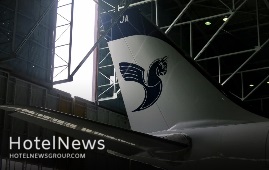
Iran’s flag carrier IranAir is set to resume flights to and from Pakistan and France after weeks of suspension imposed to curb the spread of a novel coronavirus variant into the Islamic Republic. The Civil Aviation Organization of Iran (CAOI) allowed air travel to and from Pakistan and France after dropping the two countries from the red list due to the coronavirus pandemic. CAOI Spokesman Mohammad Hassan Zibakhsh said that flights to and from Islamabad and Paris had been resumed on Tuesday after a two-month suspension, Fars reported on Sunday. “However, Iran will continue to enforce a tough ban on flights to 13 countries where the highly-infectious British variant of the coronavirus has not been fully contained,” Zibakhsh explained. The official said Pakistan and France will remain among the 26 countries which still have a high rate of infection to the virus, adding that flights to those countries will continue with restrictions.
Create: Jun 20, 2021 Edit: Jun 21, 2021 Regional News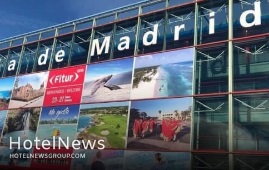
A select of Iranian travel-associated businesses and tour operators will promote handicrafts, traditions, and tourism potentials of the country at the 42nd FITUR tourism trade fair, which will be held in Madrid, Spain, from January 19 to 23, 2022. The Touring & Automobile Club of the Islamic Republic of Iran (TACI) as the representative of the Ministry of Cultural Heritage, Tourism and Handicrafts will be organizing Iran paravian at the tourism trade show, Mehr reported. A variety of exhibits, live performances, meetings, and workshops are amongst lineups of the Iranian exhibitors at FITUR 2022, which connects the industry with the inbound and outbound international markets. After hosting a post-pandemic recovery edition in the Spring of 2021, FITUR Madrid 2022 will resume its regular appointments at the beginning of the year, taking place at IFEMA – Feria de Madrid. Over the five days of the international tourism fair, professional participants will have access to unmissable commercial and business activities. In addition to being able to present their offers directly to the end customer, exhibitors can meet with over 150,000 trade visitors with significant purchasing power, according to organizers.
Create: Jun 19, 2021 Edit: Jun 19, 2021 Regional News
Iranian President Hassan Rouhani has urged sustainable efforts towards developing medical tourism across the country. “Health tourism is of great importance to us, and hospitals located in the border provinces of the country can serve a pivotal role in developing medical tourism by providing medical services to foreign guests and tourists,” Rouhani said on Thursday. He made the remarks on the sidelines of the inauguration ceremony of some health projects, urging the need for reinforcing medical and health services in some provinces, including Khorasan (Razavi), Isfahan, Fars, and East Azarbaijan, is an absolute duty. “For the time being, many Iranians living in foreign countries prefer to choose homeland for their treatment or certain surgeries,” he said, adding such a trend indicates great efforts made by “dear doctors and nurses and all the dear ones who work in the health sector”. Medical tourism is booming worldwide as about 20 to 24 million people are traveling for medical treatments annually. Factors such as increased care needs over longer lifespans, rising healthcare costs, and constant pressures on some insurance industries are reasons behind why some opt to travel abroad. Regarding price competitiveness, Iran currently ranks first in the world but the country has not been very successful in attracting potential travelers as other competitors like Singapore and Turkey. People from the Persian Gulf littoral states, Iraq and Syria as well as Iranian expatriates residing in Canada and Germany constituted the majority of medical travelers to the Islamic Republic, who received plastic, cosmetics, open-heart, and orthopedic surgeries amongst other treatments over the past couple of years. The Islamic Republic has set goals to exceed its yearly medical travelers to around two million in [calendar year] 1404 (March 2025-March 2026). Amongst Iran’s trump cards are the presence of credible surgeons and physicians, cutting-edge medical technologies, high-tech medicine and diverse specializations, super affordable procedures, and finally its hospitable people.
Create: Jun 19, 2021 Edit: Jun 19, 2021 Regional News
